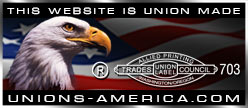| |
|
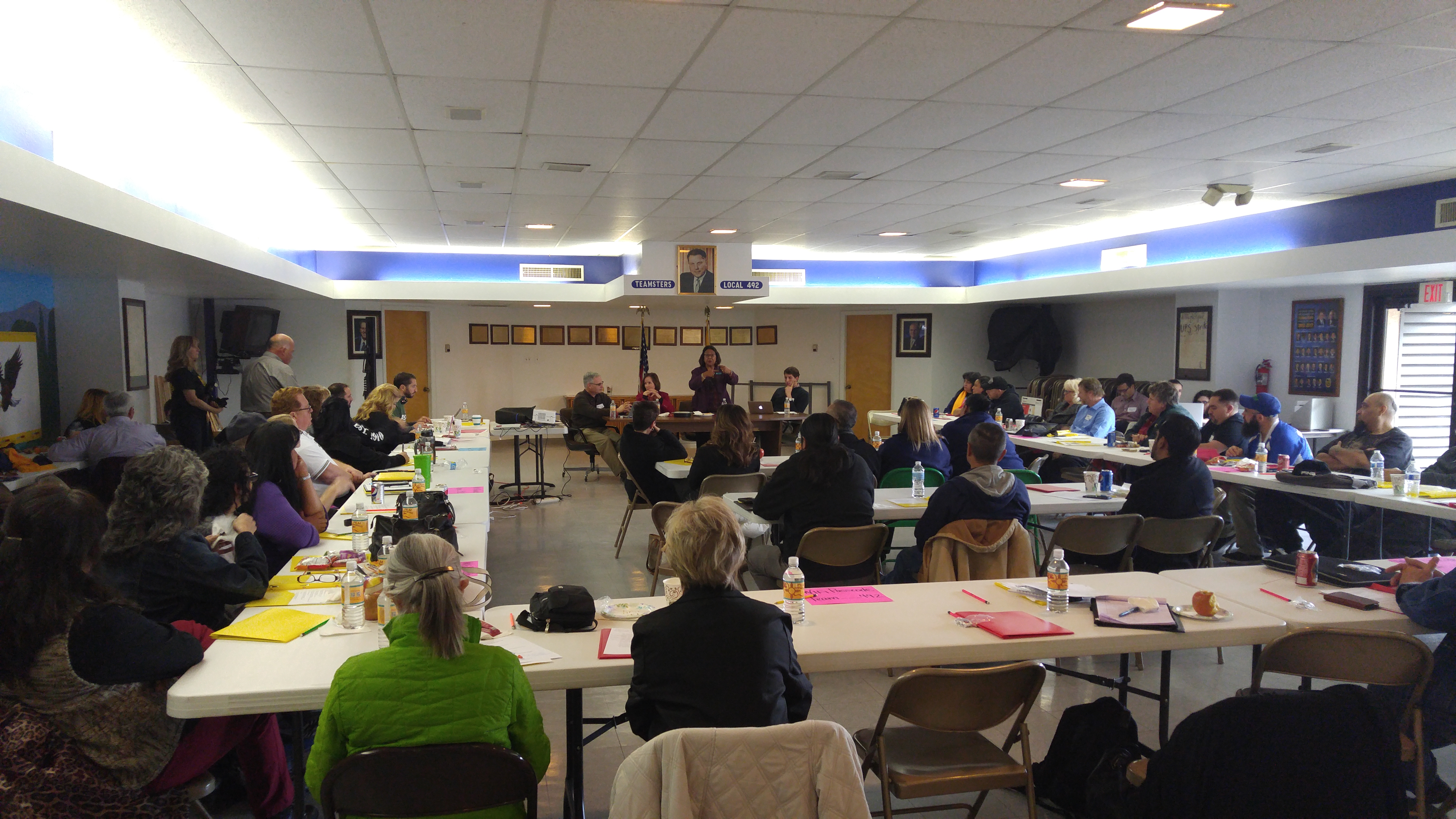
On January 8th & 9th Teamsters Local 492 hosted a 2016 Legislative Session training day for 8 NM Unions, over 100 Union Members showed up to learn about the upcoming fight to keep anti-worker legislation out of New Mexico. Unions from across NM attended including AFT, AFSCME, IATSE, IAM, IBEW, IBT, NEA, & UFCW.
These members learned the real reason RTW and other anti-worker bills are actually be pushed in NM and why out-of-state organizations like ALEC are pressuring local legislators to pass these bills they have created.
Speakers of note were State Senator Mimi Stewart and Rep Patricia Roybal Caballero who discussed the importance of getting involved and reaching out to your legislators to let them know you are against anti-worker bills like RTW.
On behalf of everyone that attended, Teamsters Local 492 would like to thank Michelle Mayorga & Chelsey Evans for organizing the event.
To Read More about RTW and why it is bad for workers, Click Here.
|
|
|
| |
|
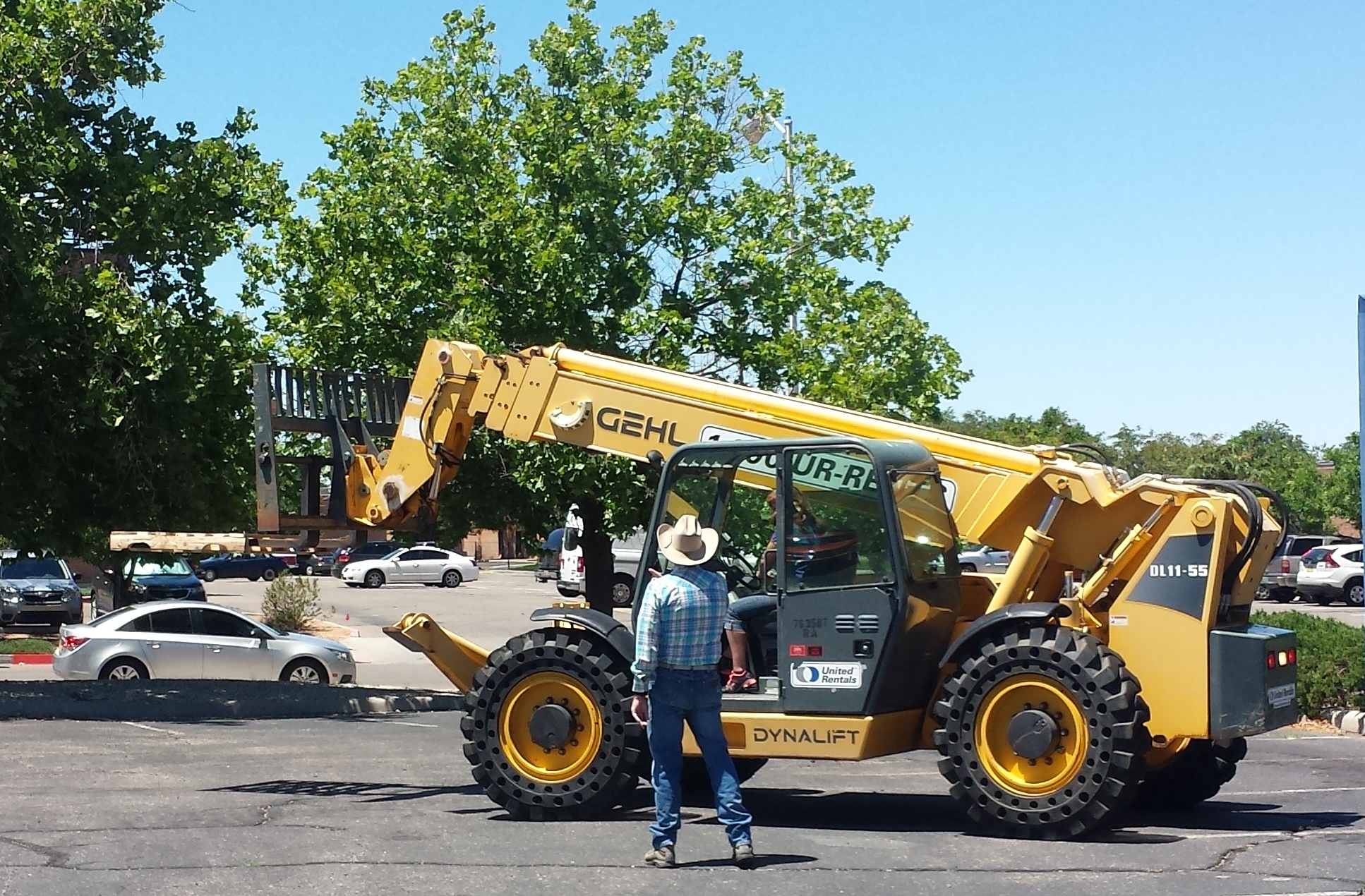
10-Hour OSHA/3-Hour Hazcom
Or Forklift Safety Certification
2016 Training Schedule
This year Operating Engineers Local 953 is allowing 492 Teamster Members to attend their training in order to offer our members several opportunities to be trained, at no cost to you.
January 16, 2016 Forklift Safety Certification 8:00am *ABQ Training site
February 6, 2016 Forklift Safety Certification 8:00am **Kirtland NM Hall
March 5 & 6 10-Hour OSHA/3-Hour Hazcom 8:00am *ABQ Training site
(6-Hours Saturday/4-Hours Sunday)
April 23 & 24 10-Hour OSHA/3-Hour Hazcom 8:00am **Espanola
(6-Hours Saturday/4-Hours Sunday)
May 7 & 8 10-Hour OSHA/3-Hour Hazcom 8:00am **Kirtland NM Hall
(6-Hours Saturday/4-Hours Sunday)
July 23, 2016 Forklift Safety Certification 8:00am *ABQ Training site
August 27 & 28 10-Hour OSHA/3-Hour Hazcom 8:00am **Espanola
(6-Hours Saturday/4-Hours Sunday)
October 8, 2016 Forklift Safety Certification 8:00am **Kirtland NM Hall
Please direct all questions about these classes to Thomas Islas
**For Location information contact the Training Director;
Thomas Islas @ 505-877-5071, Toll Free @ 866-855-8842
Email: thomaslocal953@gmail.com
*ABQ Training site is located at: 3508 Los Picaros RD. S.E. Albuquerque NM 87119
**Kirtland NM & Espanola NM Training site contact Thomas Islas
Click here to download the Notice
|
Download:
 OSHA-Hazcom & Forklift 2016 Training Schedule.pdf OSHA-Hazcom & Forklift 2016 Training Schedule.pdf
|
|
| |
|
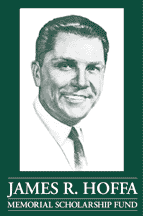
Applications for the 2016-2017 Academic year of The James R. Hoffa Memorial Scholarship Fund Application deadline March 31, 2016 are now available at the Teamsters Local 492 office or you can  Click Here for Application Forms. Click Here for Application Forms.
The James R. Hoffa Memorial Scholarship Fund awards scholarships annually to outstanding high school seniors. All applicants must comply with the following eligibility and application criteria.
Each applicant must:
- Be the son, daughter, or financial dependent of a Teamster member (hereafter also referred to as “Teamster Member Relation”) who qualifies (or in the case of retirees, has qualified)* as a member in “good standing” in the Teamsters Union per Article X, Section 5 of the International Constitution;
- Be in his/her last year of high school and may not apply if he/she has already graduated from high school;
- Be in the top 15% of his/her high school class;
- Plan to submit excellent SAT or ACT scores for evaluation (U.S. only);
- Plan to attend an accredited four-year college or university within the United States or Canada, as a full-time student. Those who plan to attend non-academic or certificate programs or community college, may not apply.
Materials will be sent to every local union in the US and Canada, but if you would like to download the materials, you can  Click Here for Application Forms Click Here for Application Forms
Scholarship applicants compete in one of the five geographic regions where the Teamster Member Relation’s Teamsters Union affiliate is located. One category of awards totals $10,000 each. These four-year scholarships are disbursed at the rate of $2,500 per year and are renewable annually. Other awards are one-time $1,000 grants. These scholarships are disbursed to the college or university at the beginning of the recipient’s freshman year.
Eligibility requirements and application procedures are the same for all awards. Recipients are selected by an impartial committee of university admissions and financial aid directors based on academic achievement, SAT/ACT scores, character, potential, and financial need. We consider all applicants without regard to race, religion, gender, disability, or any other legally protected status.
 Click Here for Application Forms Click Here for Application Forms
|
|
|
| |
|
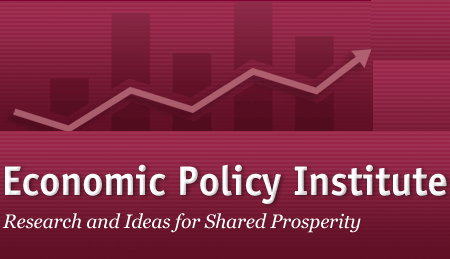
Arguing Economics at the Dinner Table (Update)
By Josh Bivens
Last Thanksgiving I wrote a blog post in the “how to argue with your relatives at Thanksgiving” genre, providing some hard numbers for people who didn’t want to let their conservative relatives spout nonsense about economics with impunity at the holiday dinner table. This year, lots of those same arguments are still in the news, so I updated some of the data and points for 2015. Also, another silly argument seems to be making the rounds: the claim that the Fed’s low interest rates have somehow hurt “poor savers,” and hence the Fed should raise rates at its next meeting.
So, here’s an updated list of some of the myths that come up every year, and how to address them.
MYTH: The government’s spending too much—they should tighten their belts the same way households had to following the Great Recession
This “tighten the belts” line is perhaps the worst analogy ever. And yes, it’s bipartisan silliness. Simply put, if everybody (households, businesses, and governments) tightens their belts together (i.e., stops spending money) then the result is just a steep recession. Even with increased federal government spending, tightened household and business spending in 2008-2009 led to a savage economic downturn. Actively cutting government spending would’ve made it worse. Much worse. There really is tons of evidence that the increases in government spending during and right after the Great Recession (the Recovery Act, mostly) made the recession much lighter and the recovery come faster.
But, say you continue to disbelieve the overwhelming evidence that spending cuts slow growth and worsen recessions. Let’s just look at the data on federal spending in the recovery since the Great Recession versus recovery from the previous three recessions (in the early 1980s, early 1990s, and early 2000s) to see if even the premise of “exploding spending” in recent years is right. The figure below shows (inflation adjusted) federal government spending over the full business cycle (centered on the recession’s trough in the middle of 2009.
Notice anything? Yeah, recovery from the Great Recession has been associated with the most austere spending following a recession in decades. And this weak spending is, by the way, the entire reason why recovery has been so slow to come. Put it really bluntly: if federal spending under the Obama administration had risen at the same rate as it did during these previous recoveries—yes, even the one during the Reagan administration—we’d have between $440-890 billion more in federal spending today, and we’d be at full employment.
MYTH: Boosting job growth and wages means getting the government off our backs: we need to cut taxes and get rid of regulations
Yes, this is smuggling in two bad arguments under one title. But while taxes and regulations are different, the theme of “heavy-handed government is holding back growth” is the same. And it’s pretty easy to demonstrate that neither is a candidate for having smothered incentives or business profitability in recent years.
Look below at the figure showing overall federal tax rates for the middle three-fifths (call them the broad middle-class) of American households since 1979. Most of the tax share for these households is actually payroll taxes—the federal income tax share for this group is almost trivially small. There are two things to note in the chart below.
First, contra Mitt Romney, middle class Americans pay taxes—there is no 47 percent here that pay nothing.
Second, taxes for this broad middle class are down a lot over the last decade (note, taxes for the very rich are down a lot as well), and the decline has been steady. Tax rates for this group in 2013 are lower than in 1979, 1989, or 2007. For the middle-fifth of American households, the overall effective federal tax rate is down by more than 40 percent since 1979. And these tax rates even include the employer side of payroll taxes, so the actual tax rates calculated by most households (who might only include the payroll taxes they directly pay) are quite a bit lower.
Meanwhile, the only economic story for how regulation could be holding back the economy that makes any sense is if a clear increase in the scale of regulatory reach had severely damaged the profitability of business, killing their incentive to produce and hire. It would be awfully hard to make the claim that we’re regulating businesses to death if, say, U.S. corporations were experiencing some of the highest profit rates ever. Hard, but that does seem to be the story that the anti-regulation crowd is sticking to. The figure below shows profit rates for the U.S. corporate sector over time. The regulatory strangling of business in recent years is very hard to see here. But feel free to squint away.
MYTH: Raising the minimum wage will just make everything cost more and do other associated bad things
It used to be that arguments against raising the minimum wage centered on job loss for precisely the workers that minimum wage increases were supposed to help. One was supposed to be stunned by the sad irony of it, I guess. But researchers have looked hard to see if minimum wage increases really do cause job-loss in the real-world (and not just in introductory economics textbooks). And they don’t.
So now that the job loss argument has been largely defanged, one often hears claims that raising minimum wages will just boost prices, thereby hurting the living standards of precisely the workers that minimum wage increases were supposed to help. Ah, the sad irony again.
There are two responses to this “it will just cause inflation” argument against raising minimum wages.
First, it is actually true that raising the wage of any group of workers will likely put upward pressure on the stuff that these workers produce. So, an increase in the minimum wage could raise prices in, say, the fast food sector. But it’s odd how this same logic doesn’t make people decide that we should push back on policy decisions that raise wages for highly-paid workers. When the people who argue that minimum wage increases will just raise prices see CEO pay exploding because of poor corporate governance and tax policy, do they generally argue that that will raise prices? Or when they see the warnings at the beginning of DVDs against making copies for commercial resale under penalty of criminal prosecution, do they say “hey, that increases prices?”
They should, because these policies do raise prices and hurt the purchasing power of non-CEOs and those who don’t earn income from copyrights. And yet CEOs and owners of entertainment companies still seem to think these are good policies from their point of view. So, low wage workers should absolutely see efforts to raise the minimum wage as useful even if they do put upward pressure on prices.
This reasoning leads to our second point: the wage increase spurred by a higher minimum wage will absolutely dwarf any potential impact on prices for the living standards of affected workers. Take the increase in wage income estimated to be generated by an increase in the federal minimum wage to $10.10 by 2016—roughly $35 billion. Divide this by the total amount spent on consumption goods in the U.S. economy (about $12 trillion) to get a sense of how much this will raise prices in the economy—0.3 percent. To be clear, this does not mean a 0.3 percent increase in inflation, it means a one-time 0.3 percent increase in prices. So, basically a 0.1 percent increase in inflation for 3 years and then dropping back to zero.
Meanwhile, the typical worker affected by the proposed $10.10 increase would see (roughly) a 20 percent raise in hourly pay. And even if the entirety of the minimum wage increase was financed simply by higher prices (it won’t be), then this worker is still much, much better off.
John Schmitt from the Center for Economic and Policy Research has a great paper the sums up lots of this—showing why lots of things (not just prices or jobs) can change in response to a minimum wage increase, including productivity and profit margins.
MYTH: The real problem with today’s economy is workers don’t have the right skills to keep pace with technology.
This one is very widespread and very hard to address seriously in just a few sentences. But, some observations.
First, an appeal to authority. People who have looked very carefully at the evidence here find very little to suggest that demand for high-skilled workers has outpaced their supply and that this gap has driven inequality in wage growth in recent years.
Second, even seven years after the start of the Great Recession, there remain two unemployed workers (and more if you count “missing workers”) for each job opening. Today’s excessively high unemployment (and too-low labor force participation) remains mostly a general job availability problem and not a reflection of any “skills mismatch.”
Third, inflation-adjusted wages—even for workers with a four year college degree—have been flat for over a decade. This doesn’t look like an economy rewarding skill per se. Instead it seems to be rewarding a very narrow slice at the top.
Fourth, since the start of the recession at the end of 2007, more than half of all income gains in the corporate sector have gone to capital owners instead of workers (capital owners have generally claimed well under a quarter of total income gains over the past six decades). Unless one is changing the definition of “skilled” to mean “already owning lots of wealth,” it’s hard to see what skills have to do with this.
Finally, many people point to the recent decade’s obvious technological advances as evidence that the economy has been changed in a way that can’t provide decent living standards to many workers. This is far from clear. After all, technology changes all the time. In fact, the way economists measure technological change, the amount of goods and services that can be produced in an hour of work, actually shows more rapid technological change in the 30 years after World War II—a period of much more egalitarian economic growth.
Explanations for economic changes based on technological change always sound convincing, for a simple reason: At any point over the past century you could have walked into a factory and been told about the big technological improvements that had been made over the past decade. If you’re a business writer who walks into a factory today looking for a root cause of the labor market’s doldrums, guess what? You’ll be told about the big technological improvements made over the past few years, and then you might think, “Hey, that’s why the jobs aren’t here and why wages are flat!” But, if you had walked into a factory in 2000—when the unemployment rate reached 3.8 percent—you also would’ve been told about an amazing decade of technological advancements. And you might think “hey, that’s why things are going so well!”
Technology is always advancing, but it does not have to consistently damage most American’s living standards. The reason American workers haven’t been doing well for most of the past three decades is rooted in policy, not technology.
MYTH: Unions haven’t done anything for us
It is often noted that the rise in American inequality and the beginning of the era of what some have called the Great Wage Slowdown is correlated with the declining share of American workers represented by a union.
Yet few people seem to consider this decline in worker representation the outcome of apolicydecision. Instead they shrug and decide that unions aren’t modern or aren’t suited for the new economy (however you decide to define that). Yet advanced countries around the world, with economies as productive (or more) than ours, have much higher rates of unionization. The share of workers that wanted to be represented by a union before the Great Recession had reached historic highs, even while the share that were in unions reached historic lows. It’s hard to imagine that policy decisions aren’t playing a role in that growing wedge.
And clearly policy has not kept pace with growing employer hostility to unions or kept the playing field level between employers and workers wanting to join a union—as shown by the increased pace of illegal firings of union organizers in recent decades.
Why should today’s workers care whether or not unions thrive or decline? Tom Edsall raised a good point recently in this regard: those who hate unions sure think policy matters. Every chance they get, advocates for the already-rich fight tooth and nail to not just contain, but roll back workers’ ability to bargain collectively.
And in purely self-interested terms they’re right. Unions do not damage productivity or employment growth, but they do distribute income gains more equitably between corporate managers/capital owners and workers. And the gains to workers spurred by unionization do not just accrue to union members. When they have power they set standards which spill over into higher wages and better compensation even for non-union workers. Below is an updated chart first made by Colin Gordon showing the long-run relationship between unionization and top income shares.
So it makes perfect sense for those invested in the economic wellbeing of highly-paid corporate managers and capital owners to hate unions. What makes much less sense is that too many of the rest of us don’t seem to appreciate what they do.
MYTH: By keeping interest rates low, the Federal Reserve hurts “poor savers”
I should start by noting that the whole idea of “poor savers” is odd. Genuinely asset-poor households tend to be net borrowers, not net savers. Net borrowers are hurt—and hurt a lot—when inflation comes in below expectations. Think about a mortgage which comes with a fixed monthly payment of $1,500 per month. When you take out a mortgage, a key variable for how affordable it will be over the life of the loan is what you forecast for the rate of inflation over that time. Say that you made the common-sense assumption that the Fed will meet its 2 percent inflation target in coming years. This means you counted on your monthly payment getting cheaper (by 2 percent) in price-adjusted terms every year over the life of your mortgage. If inflation instead comes in well below this target (the way it has in recent years), then the inflation-adjusted burden of your mortgage erodes much more slowly, and your mortgage has become less affordable.
So, how can the Fed insure that they actually meet their inflation target and help net borrowers? Keep rates low.
Moreover, for those who really do have significant net savings (we should probably tend to refer to them as “wealthy,” by the way), it is true that rates of return on their savings (mostly held as government bonds or private sector stocks and bonds) have been low in recent years. But the arithmetic and the economics of assets and rates of return is clear that low rates of return on assets are essentially always and everywhere associated with high prices for these assets. Take a bond that will pay off $110 in one year. If the price one must pay to obtain this bond today is $100, then the rate of return is 10 percent. If the price one must pay to obtain this bond today rises to $105, then the rate of return falls to (just under) 5 percent.
Yes, it gets more complicated than this pretty quickly, but the fundamental insight remains that rates of return are low today because assets are so expensive. Given this, it is very had to take complaints from significant net savers seriously, when they are essentially complaining that their assets are so valuable (and they themselves are so wealthy today) that rates of return going forward won’t be particularly high.
So, what about “poor savers” who have all their net worth in a cash account (i.e., not stocks or bonds)? Aren’t they hurt by low rates? Conceivably—but nobody with significant assets (say more than $5,000) holds them all in cash. And for $5,000 in cash, the difference between 3 percent returns and zero is about $150. Not nothing, but compare these losses relative to the broader damage done by higher rates and it’s still an awfully weak argument.
Finally, and most importantly, the most important transmission mechanism from Fed interest rate policy to income distribution comes though the labor market. Because low interest rates boost economic growth and lower unemployment, they boost wages for workers—and these wage boosts are most pronounced for low- and moderate-wage workers. These labor market effects swamp the effects on asset prices for the vast majority of Americans, because income for most American households is dominated by their weekly paychecks, rather than what they earn from asset holdings.
|
|
|
| |
|
Learn How The Teamsters Have Shaped Working America Over The Last 100 Years with this great video
|
|
|
| |
|
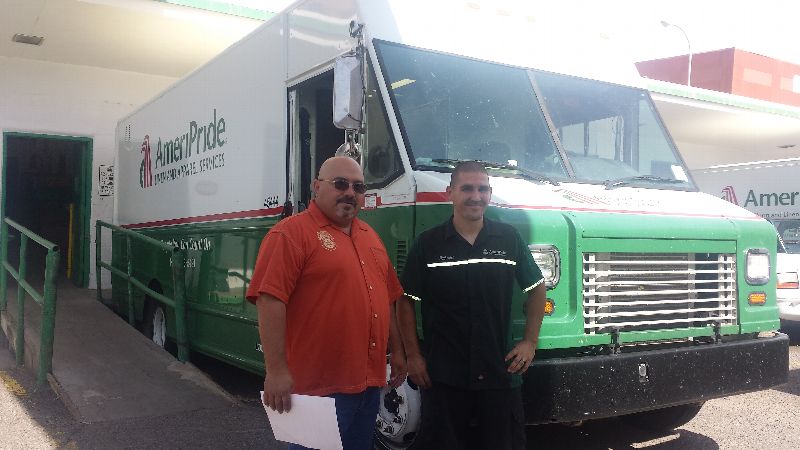
Brother Kevin Pohl is currently the Business Agent for AmeriPride Linen, Chiulista Services, Creamland Dairies, Data Monitor Systems, Estancia Valley Solid Waste Authority, First Impressions, Franklin Earth Moving, Greetings Etc Inc., Hertz, NCRTD Blue Bus, Penske, Sara Lee, Sysco, Team One CS, UPS Freight, & US Airways (American Airlines). Some of these Companies have more than one location, so trying to visit every location of every Company he represents can be quite a task. Last week Kevin went to most of these locations and below you will see a photo montage (Click Here to view in photo gallery) of one day when Brother Trey White had the privilege of following him around as they visited 20 locations.
In addition to his duties as Business Agent, Kevin also serves as the Political coordinator for Local 492. This includes being the 492 contact person for political candidates wishing to be officially endorsed by the Teamsters Local 492, and coordinating 492 member volunteers for those endorsed candidate's campaigns. Brother Pohl is also the Teamsters Local 492 Organizer, as well as representing the Teamsters in the NM Building Material & Construction Trade Division, which includes securing large Federal or State government construction jobs, representing Teamsters local 492 during Project Labor Agreement (PLA's) negotiations, and clarifying/enforcing jurisdictional issues. Brother Pohl is also the Teamsters Local 492 Event Planner, which includes annual Membership Appreciation Day, Steward Seminars, Rallies, etc. Thanks Kevin for all you do for The Teamsters of New Mexico!
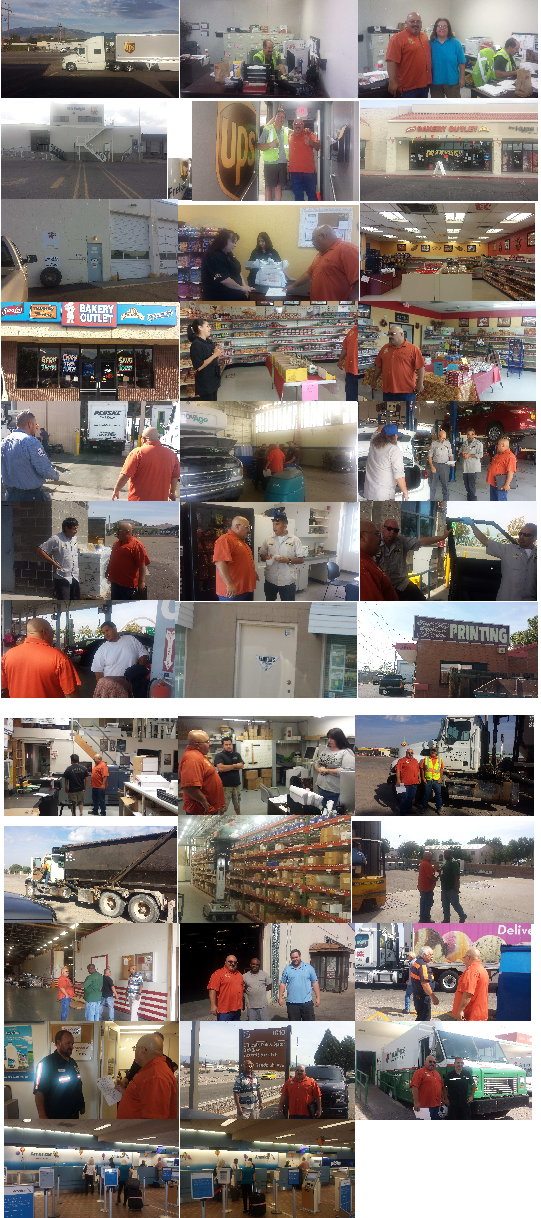
|
|
|
| |
|
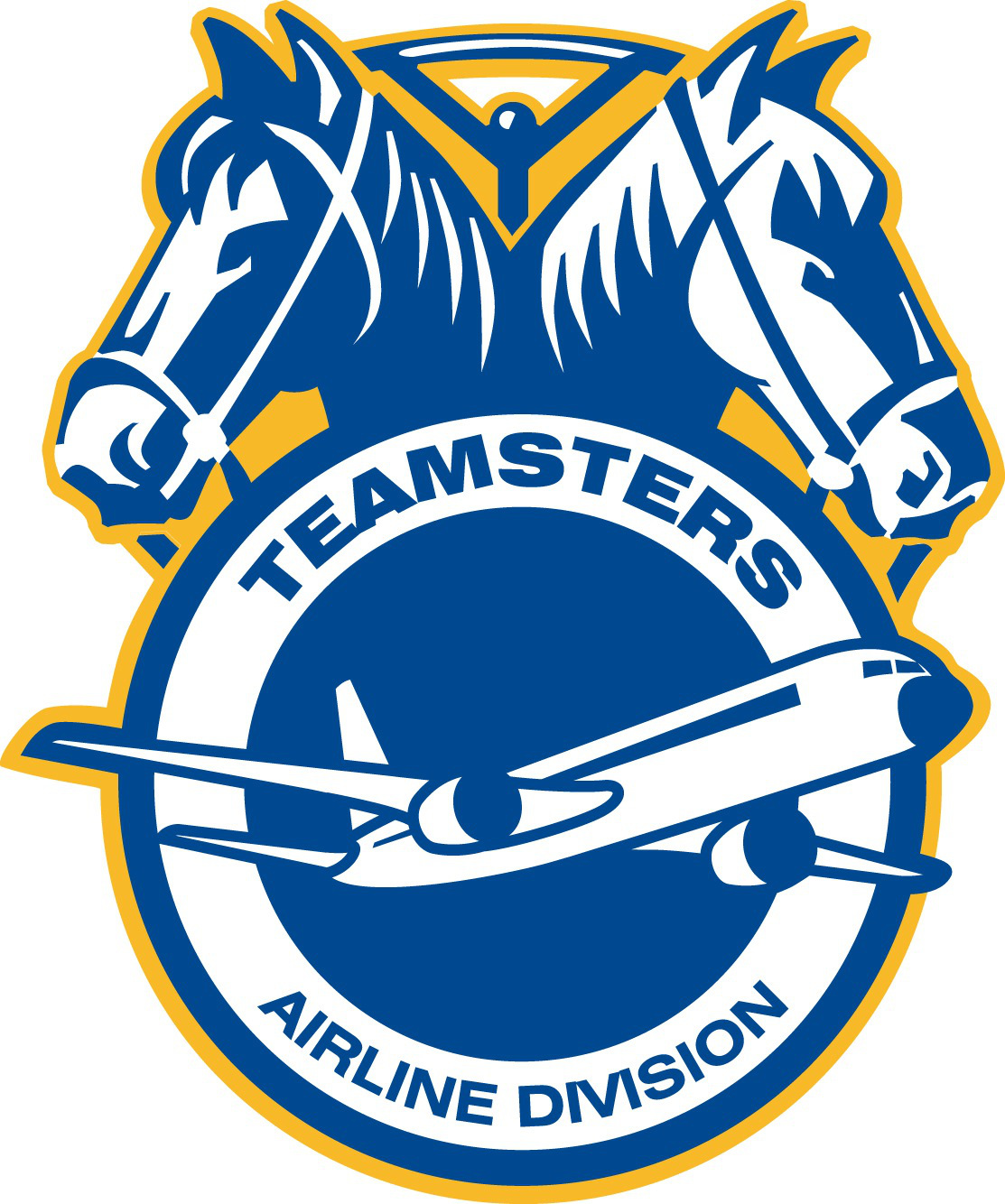
American Airlines Passenger Service Agents Reach Tentative Agreement Which Will Cover 15,000 Workers at the Airline with Teamsters and CWA If Ratified.
Click Here to View 492 AA Contract page which has The IBT Notice and Wage Scales
The International Brotherhood of Teamsters/Communications Workers of America Association has reached a tentative first agreement with American Airlines covering 15,000 passenger service agents. The Association is the joint bargaining group (IBT and CWA) that represents agents at American Airlines.
Details of the tentative agreement are being provided to members and a ratification vote will be scheduled. More information will be made available shortly.
In September 2014, by an 86 percent vote, airport and reservations agents at American—formed by the merger of American Airlines and US Airways—overwhelmingly chose representation by the Teamsters/CWA.
"Today's tentative agreement provides significant pay raises to our team members, while preserving jobs and facilitating growth," said Kerry Philipovitch, senior vice president – Customer Experience. "Our agents and representatives have played a critical role in our integration and we thank them for the superior service they provide to our customers every day. We would also like to thank the CWA-IBT for their professionalism and for advocating for their members, and to both negotiating teams for their dedication and hard work toward reaching an agreement."
|
|
|
| |
|
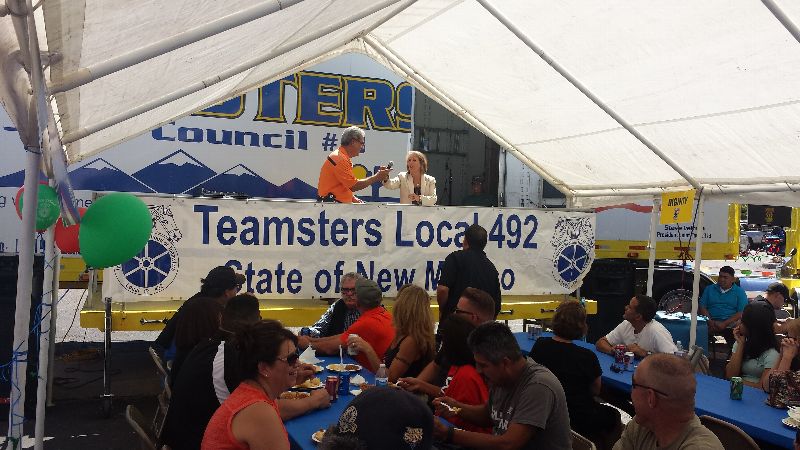
The 2015 New Mexico Teamsters Appreciation Day had a record turnout this year with about 500 people (members and their families) attending the event from a wide variety of crafts and companies which included (in alphabetical order) ABF, AmeriPride Linen, Chiulista, Creamland, Film/Movies, Franklins, LANS, NCRTD, OMI, Penske, Sysco, TeamOne, UPS, UPS Freight, and YRC. There were Teamster Retirees that also attended and had a booth set up for info on their Teamster Retiree Club.
To View Photos of the Event, Click Here
Guest speakers included Teamsters Vice President Steve Vairma, US Congresswoman Michelle Lujan Grisham, and New Mexico State Senator & Majority Leader Michael Sanchez. The Executive Board, Business Agents and office staff were on hand and enjoyed meeting and talking to the Members in this social atmosphere which also gave the Members a chance to have quality time to get to know the 492 E-Board & BA’s better. Everyone enjoyed the food featuring Popeye’s Chicken, the free Teamster shirts for Members, face painting, and some Teamster swag as well.
The Teamsters Joint Council #3 Truck was there (thanks to Retired 455 Vice President, Jim Adams, who drove it down from CO).
We would like to thank Brother David Snow, who is a Union Steward at Creamland, for donating his time and Jumper for the kids to play in.
There was also a raffle where we had lots of prizes and lots of winners. The two most sought after prizes were the TV (won by Brother John Petitt of UPS) and the custom made 492 Teamster Disk-it (won by Brother Joshua Cordova of ABF).
This is the 3rd year Teamsters Local 492 has hosted an event to celebrate the Teamsters of New Mexico, but this is the first year we have had a committee of Teamsters Members plan the event, and it definitely showed. As you may have noticed, the event was very well organized and this years Member attendance more than doubled last year’s! That is thanks to Brother Kevin Pohl and his 492 Event Committee, led by Brother Joseph Carrillo. The Event Committee put all of this together, got the word out, and performed way beyond expectations with a phenomenal job! The attention to detail, the seamless functionality, the amazing appearance, the great prizes, and everything else, were all because of the work and vision The 492 Event Committee.
The Teamsters Local 492 Executive Board, on behalf of all of the Members who enjoyed the event, would like to thank The 492 Event Committee for all of their hard work and the countless hours of their personal time they donated to this great Union over the last 3 months preparing for this day. On the committee are (in alphabetical order) Sister Esther Basham who also volunteered at food table, Brother Joseph Carrillo (event coordination), Sister Silvana Cufré who also volunteered with face painting for the kids, Sister Lacey Eversole who also volunteered at the check-in table, Sister Rori Hall who also volunteered at the check-in table, Brother Albert Lujan who also volunteered with face painting for the kids, and Brother Robert Sanders who also volunteered at the DRIVE table.
We would also like to thank all the volunteers that helped set up the event, close down and clean up, and also thanks to the day-of-the-event volunteers that kept the whole thing running smoothly which include all those above plus; Sister Darlene Archuleta, Sister Melinda Delgado, Brother Robert Delgado, Sister Jenny Gutierrez, Sister Lena Hodges, Sister Mary Jeter, Teamsters Local 492 Secretary-Treasurer Walter R. Maestas, Sister Melissa Malcom, Brother Eddy Merida, Brother Josh Perez, and Brother Jesus Vidaca. (If you would like to be on the event committee or volunteer at our next event, let us know by Clicking Here)
A Special thank you to ABF for lending us their tents and to Line Haul Manager Randy Archer for helping us set them up.
Thank you to all who participated and attended this event, we truly enjoyed seeing all of you and meeting your families and we hope to be able to do this again next year. On behalf the Teamsters Local 492 staff, Business Agents and Executive Board, we truly appreciate the Members of this Local Union and everything you do to make this Union great, and all the hard working Union Stewards that do such a great job helping their fellow Members, Thank you Teamster Brothers & Sisters!
|
|
|
| |
|
 The Teamsters Local 492 Executive Board would like to invite you and your family to the 2015 New Mexico Teamsters Appreciation Day for some food, music, and great raffle prizes. Come join us on Saturday 26th at the Union Hall from 11am to 4pm. This year’s event will feature special speakers such as Teamsters Vice President Steve Vairma and New Mexico Senator Michael Sanchez. We will be serving Popeye’s chicken, the JC3 Teamster truck will be there, and we will have many more raffle prizes than last year. In addition, you will get your official New Mexico Teamsters Appreciation Day tee shirt when you register at the event. We look forward to seeing you there. The Teamsters Local 492 Executive Board would like to invite you and your family to the 2015 New Mexico Teamsters Appreciation Day for some food, music, and great raffle prizes. Come join us on Saturday 26th at the Union Hall from 11am to 4pm. This year’s event will feature special speakers such as Teamsters Vice President Steve Vairma and New Mexico Senator Michael Sanchez. We will be serving Popeye’s chicken, the JC3 Teamster truck will be there, and we will have many more raffle prizes than last year. In addition, you will get your official New Mexico Teamsters Appreciation Day tee shirt when you register at the event. We look forward to seeing you there.
|
|
|
| |
|
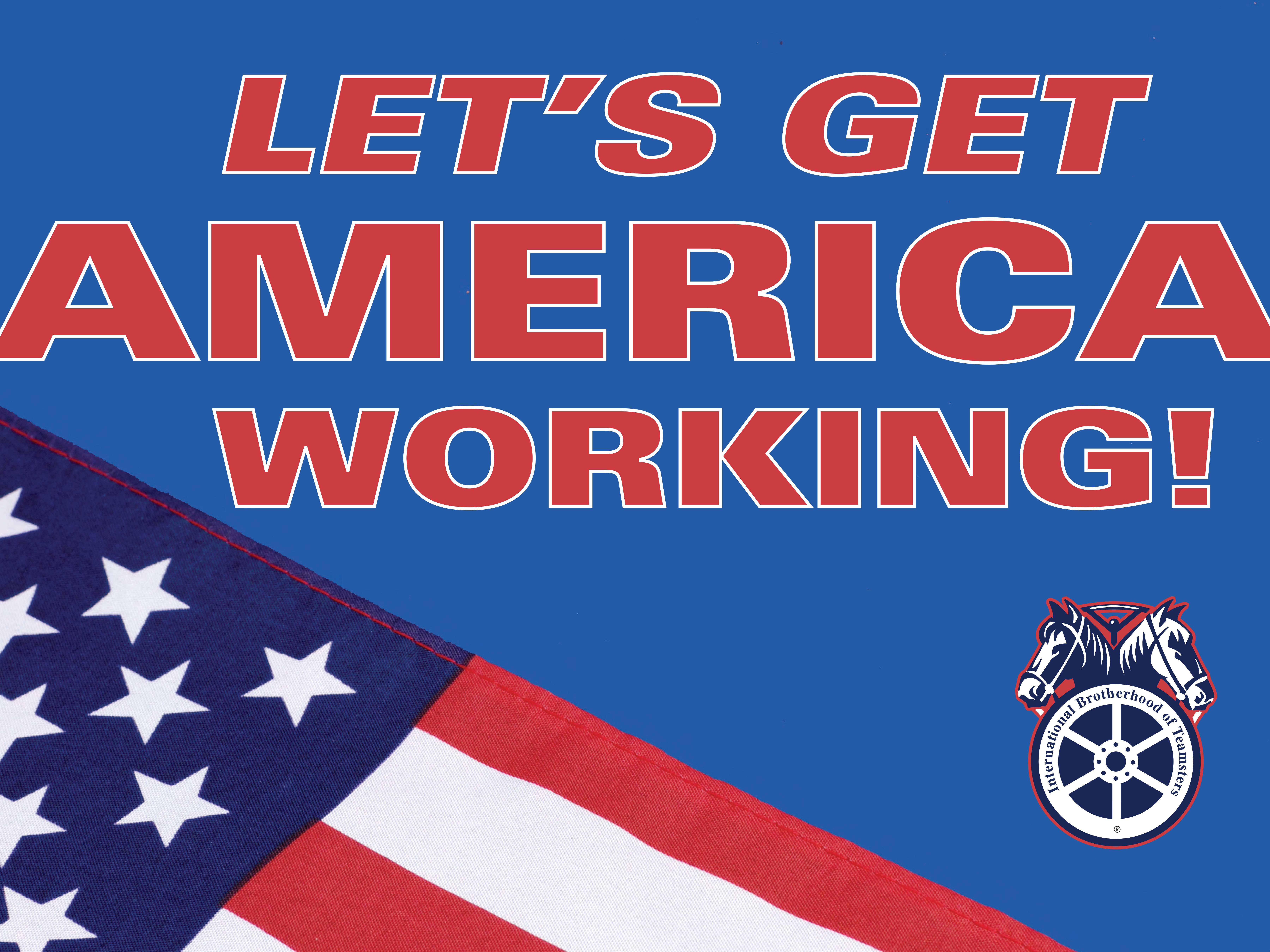
By Teamster General President James P. Hoffa September 9, 2015
Everyday Americans are facing increased challenges at work and at home. The outsourcing of millions of good-paying jobs overseas has led to lower paychecks here in the U.S. That, in turn, has made it more difficult for many workers to provide for their families.
The Teamsters, however, have a plan to help turn the tide. Called “Let’s Get America Working,” it will encourage both Democratic and Republican lawmakers to endorse a pro-worker platform. At the center of the campaign is the need for this country to invest in infrastructure, which in turn will create good jobs for hardworking Americans.
U.S. Transportation Department Secretary Anthony Foxx, a Democrat, and former Mississippi Gov. Haley Barbour, a Republican, and I will be discussing how infrastructure investment is key to creating new, better-paying jobs and getting the U.S. economy back on track. Working on transportation, energy and water projects will put thousands to work in construction jobs across the country. It will also improve roads, bridges, ports and other infrastructure, which in turn will help business and improve the U.S. economy.
Buy-in from both parties is necessary to effectuate change. If this nation is going to improve the lives of its citizens, Congress needs to advance bipartisan policies that will encourage good job growth. And it must put the current and future generations of workers in a position to succeed in the workforce by giving them the skills they need.
There was a time when all these issues weren’t partisan issues — they were American values, something everyone could support. But government is broken. Partisan bickering has replaced finding solutions. That’s why it’s essential for the Teamsters and like-minded allies all over the country to join together and push this message with lawmakers, colleagues, friends and family.
Infrastructure presents an opportunity to break the political gridlock. Congress in late July approved a three-month extension for spending on transportation projects that provides a temporary patch until the end of October for continuing road and rail funding. But it is not a real solution.
Since 2008, Congress has transferred more than $62 billion from the general fund to keep the Highway Trust Fund afloat, and it has been more than a decade since Congress has passed a highway bill more than two years in duration. Meanwhile, the transportation system continues to crumble and the safety of those who work and travel along the vast network of U.S. roads and rails is being jeopardized.
There also is a significant need to move forward with a broader agenda that puts U.S. workers first. That means standing up against lousy trade deals like the Trans-Pacific Partnership that send American jobs overseas; protecting workers’ rights to form unions and collectively bargain; increasing affordability of college and vocational schools; and ensuring retirement and pension security for working families.
If elected representatives from both parties want to rebuild the trust between government and workers, they need to reinvest in the people that make this country great. Better pay will lead to more spending and improve workers’ quality of life. Everyone wins.
Let’s get America working.
|
|
|
|
